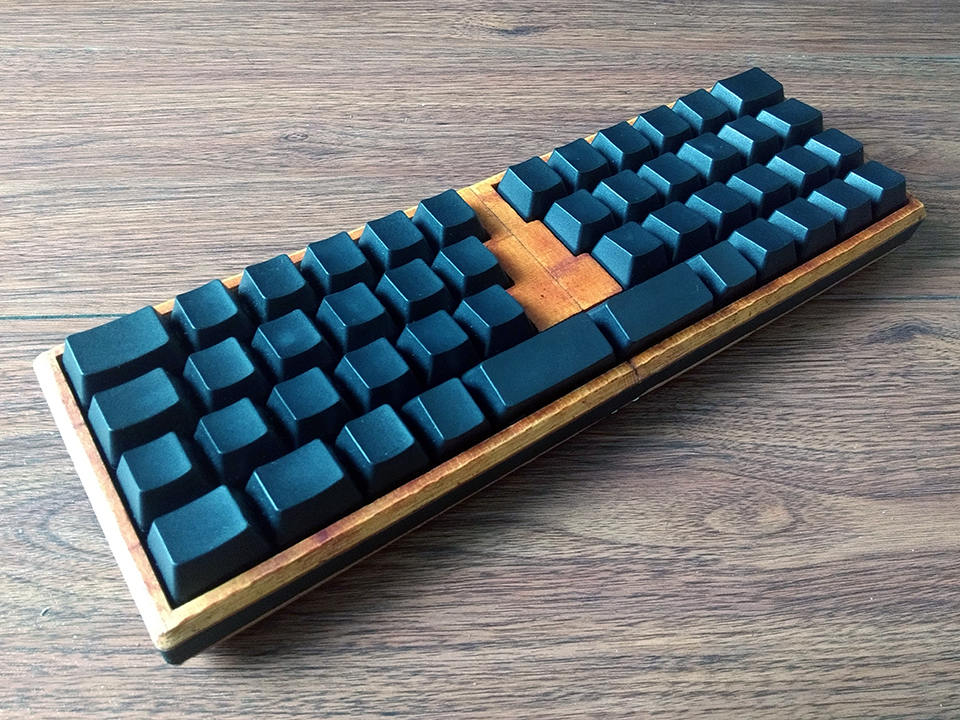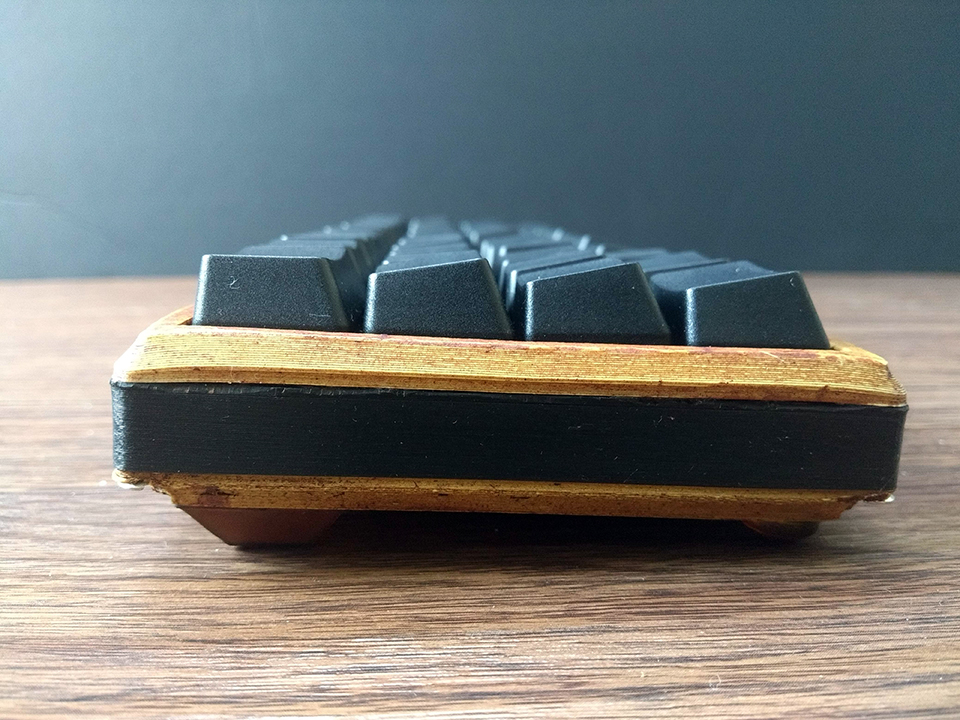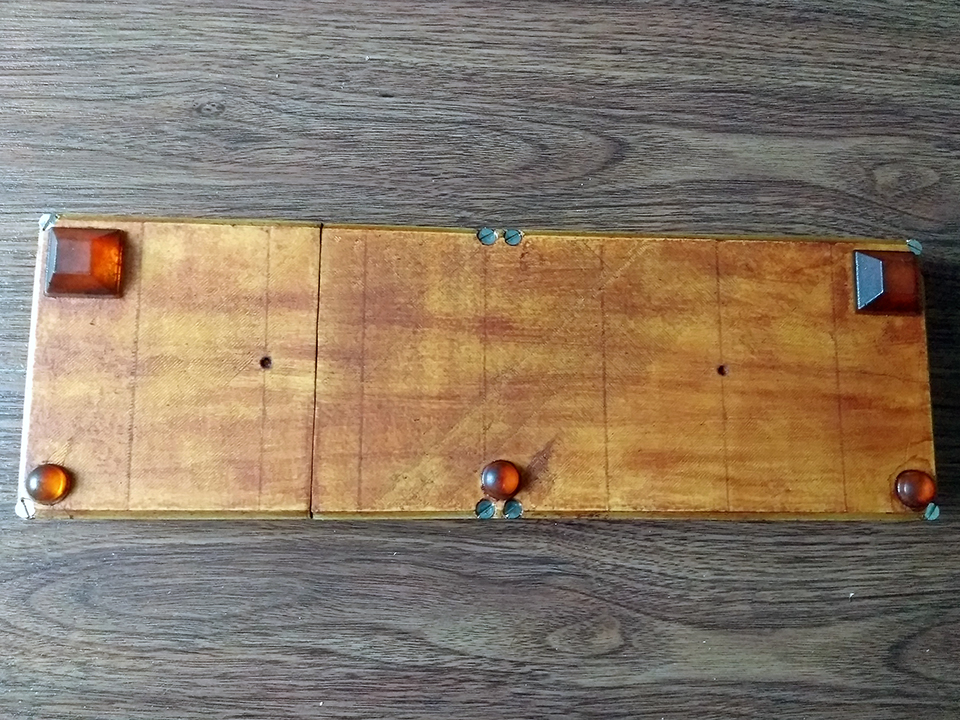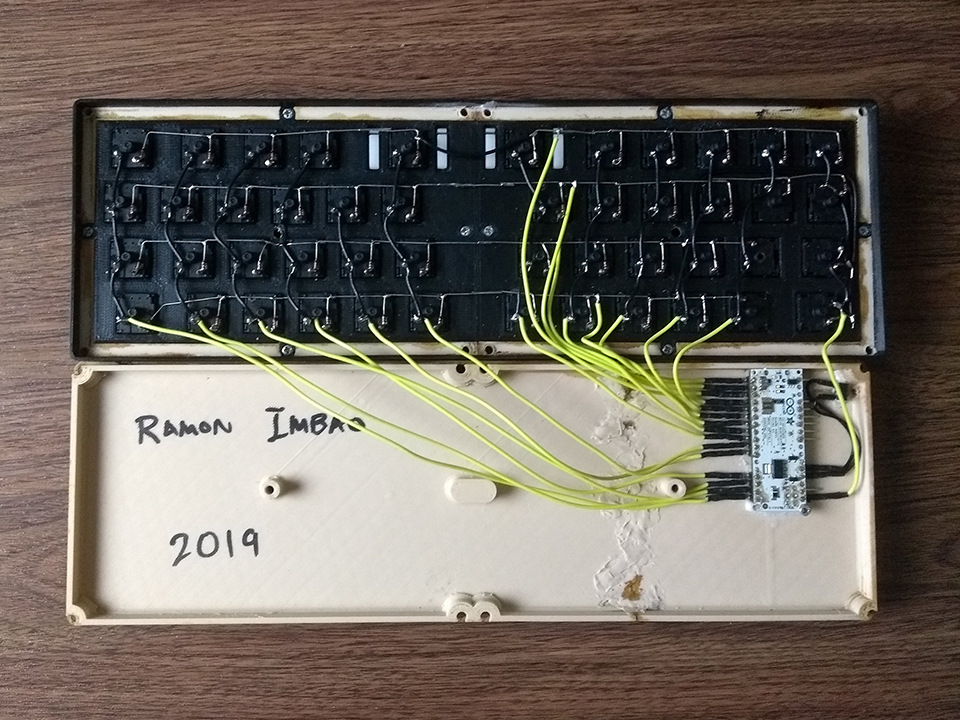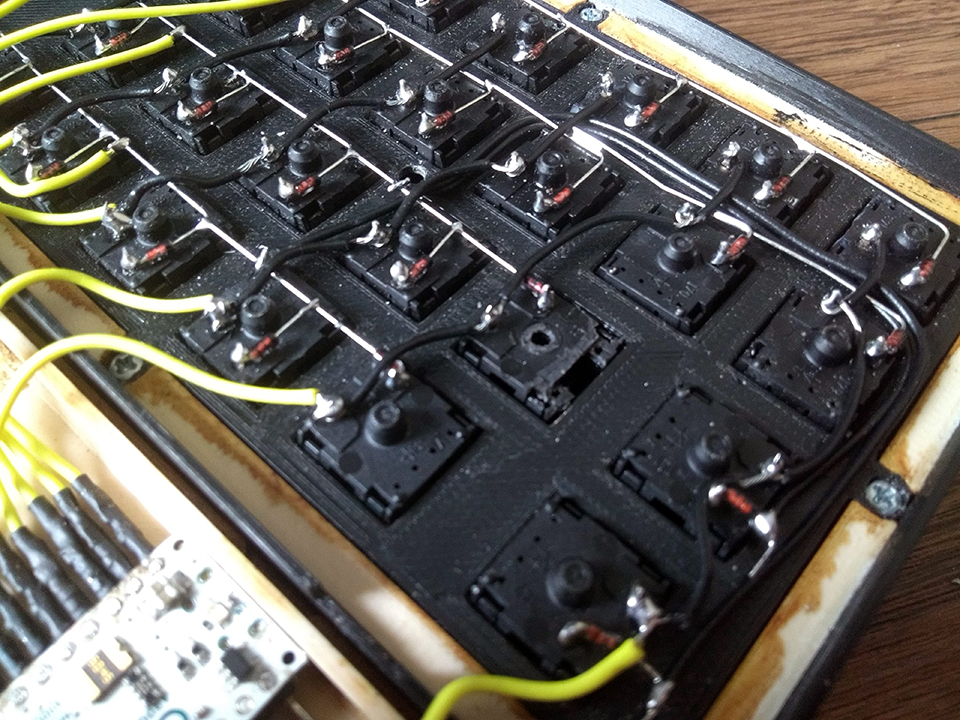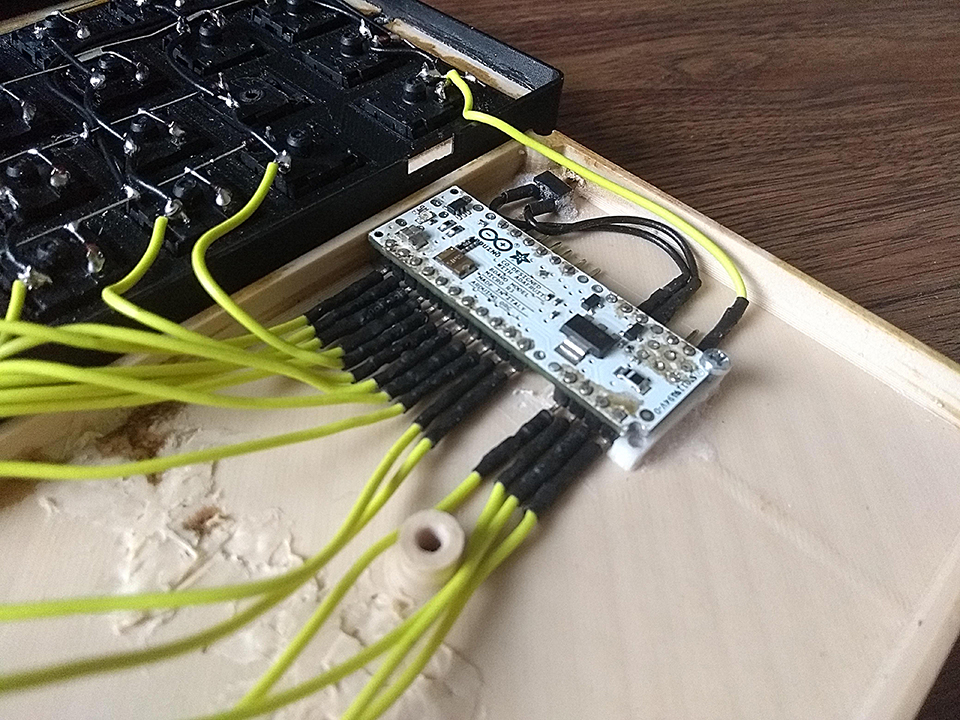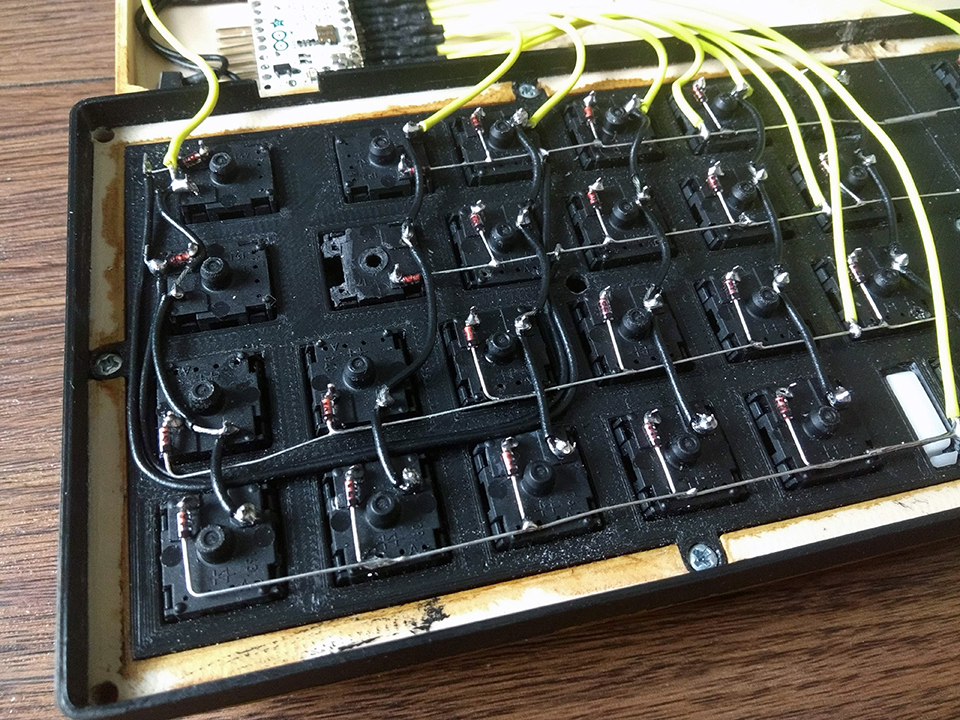40% Ortho Reverse Slant 'Orson' Keyboard
A 3D-printed symmetric layout 40% keyboard.
Description
NOTE: I posted this on the mechanical keyboards subreddit before and am posting on my blog now.
This is yet another 3D printed mechanical keyboard I designed. It's based somewhat on the Katana60 keyboard which is the first time I saw the symmetrical layout. It features:
- Cherry MX brown switches
- Blank black PBT keycaps
- Wooden PLA filament
- Arduino Micro (not to be confused with the ultra cheap Arduino Pro Micro)
I had actually designed the case for the Pro Micro but I managed to break the micro USB port on one. I had a broken Micro lying around (given to me because its microcontroller IC got its magic smoke released). I swapped the ICs et voilà! A working Arduino Micro.
The case was designed for the Pro Micro but fortunately just flipping the Micro around aligns the USB port nicely. The downside is that I had to modify one of the switches by cutting off the stabilizing center pin, and shaving off a bit of the underside. Note also the adjacent switches being different orientations.
I tried something new with this design: a top-mount plate. I printed the case in wood PLA and the plate in regular black PLA.
Thoughts
I'm not too fond of the layout. It feels like typing on an ortholinear keyboard but not quite. I regularly hit the next column over because I'm expecting the keys to be aligned vertically on the column. I guess it just takes some practice. For extra effort in my part, I'm also using this board as a way to practice Colemak.
This project was also a way for me to test out staining 3D printed wood filament. In the past I used a mix of coffee and glue to stain them which gave meh results. Now, using cherry stain (hehe) I think it's... okay. It's rather uneven in some parts and applying more of a stain just makes the other parts darker. I guess it's really how it is since it isn't 100% wood.
Files
The files are available in this repository under the MIT license.
